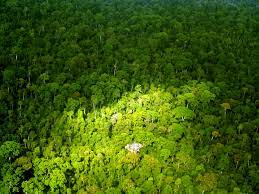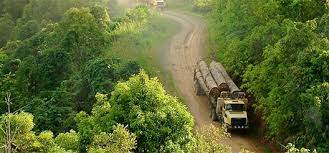Forests play a very important role in protecting the land from desertification and conserve biodiversity. They also provide ecosystem goods and services.
However, despite their value, forest ecosystems are threatened by deforestation and land degradation. The degradation of forest ecosystems in drylands results in a loss of biomass and biodiversity, water resources and carbon storage capacity.
Deforestation and forest degradation have long been recognized as significant sources of greenhouse gas (GHG) emissions. The fifth assessment report of climate change causes and impacts published by the Inter-governmental Panel on Climate Change (IPCC), inferred that deforestation and forest degradation account for over ten percent of GHG emissions.
Reducing emissions from deforestation and forest degradation (REDD) is a mechanism that has been under negotiation by the United Nations Framework Convention on Climate Change (UNFCCC) with the objective of mitigating climate change through reducing net emissions of greenhouse gases through enhanced forest management in developing countries.
The UN-REDD Programme was set up in 2008 to build on the convening power and technical expertise of the UN Food and Agriculture Organization (FAO), the UN Development Programme (UNDP) and the UN Environment Programme (UNEP), combining forces to support developing countries get ready to undertake efforts to mitigate climate change through the implementation of REDD+ activities agreed under the UNFCCC.
REDD+ is defined by the conference of parties (COP) to United Nations Framework Convention on Climate Change (UNFCCC) as reducing emissions from deforestation and forest degradation, conservation of forest carbon stock, sustainable management of forests and enhancement of forest carbon stocks in developing countries.
Read Also : Methods of Disposal of Waste Pesticide Containers
The defined scope of REDD+ encourages developing countries Parties to contribute to mitigation actions in the forest sector by undertaking the following activities as deemed appropriate by each Party and in accordance with their respective capabilities and national circumstances

Reducing emissions from deforestation.
Reducing emissions from forest degradation.
Conservation of forest carbon stocks.
Sustainable management of forests.
Enhancement of forest carbon stocks.
It is increasingly apparent that REDD+ can make a significant contribution to sustainable development in the context of climate change.
Some countries have launched ambitious climate change, green and sustainable development action plans, in which REDD+ is a major component of the effort to transform natural resource management and tackle poverty.
The challenges were succinctly stated at the UN climate change summit in 2014, in a declaration on tackling deforestation and forest degradation:
“Forestsareessentialtoourfuture.Morethan1.6billionpeopledepend on them for food, water, fuel, medicines, traditional cultures andlivelihoods.
Forests also support up to 80% of terrestrial biodiversityandplayavitalroleinsafeguardingtheclimatebynaturallysequestering carbon.
Yet, each year an average of 13 million hectares offorest disappear, often with devastating impacts on communities andindigenouspeoples.
Theconversionofforestsfortheproductionofcommoditiesaccountsforroughlyhalfofglobaldeforestation.Infrastructure,urbanexpansion,energy,miningandfuelwoodcollection also contribute in varying degrees.
Reducing emissions fromdeforestationandincreasingforestrestorationwillbeextremelyimportant in limiting global warming to +2°C.
Forests represent one ofthe largest, most cost-effective climate solutions available today.
Actionto conserve, sustainably manage and restore forests can contribute toeconomic growth, poverty alleviation, rule of law, food security, climateresilience and biodiversity conservation.
It can help secure respect forthe rights of forest dependent indigenous peoples, while promoting theirparticipationandthatoflocalcommunitiesindecision-making”.
This substantial agenda defining the global effort to tackle climate change and keep temperature increase below plus two degrees Celsius above the pre-industrial levels, combined with supporting countries to make significant and transformative progress with respect to the UN Sustainable Development Goals (SDGs), underpins the design of the UN-REDD+ Programme.
In conclusion, from the foregoing it is clear that the loss of forest and woodland cover affect the environment with some level of ecological consequences. Local communities in many places are heavily dependent on withdrawals from forests for sustaining their livelihoods.
To address this unsustainable demand of forest goods and services, alternate clean sources of energy, like liquefied natural gas, promotion of agro-forestry component and withdrawals from forests within limit of sustainable harvests should be encouraged.
Forests are important terrestrial ecosystems and they provide ecosystem services that are vital to the ecological functioning of the planet.
Deforestation is caused by destruction of woodland, expansion of logging activities, urban development etc.
Deforestation reduces the capacity of forest to absorb carbon dioxide which is recognized as significant sources of greenhouse gas (GHG) emissions that enhances global warming.
The objectives of the United Nation Redd-plus in combating deforestation and reducing emissions.

